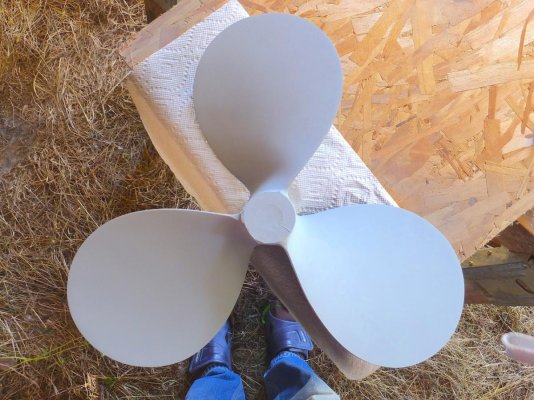..and sacrificial zincs get covered with marine growth as fast as any other underwater part that does not have anti-fouling on it.
.
If they do then the zincs are not working. The tiny amount of current in them will keep them free of growth. In fact, this is one way to tell if a zinc anode is doing its job or not. I learned this from our marine electrical shop and the dive shop that does our boat twice a year.
This has always been the case on our boat and the boats I see come out on the Travelift in the yard in our marina. Regardless of the barnacle and weed buildup on the hull itself, the zincs or what's left of them are always totally growth-free.
A couple of times we have gone longer than we wanted between haulouts and bottom paint. The boat had a good coating of slime and "moss" below the waterline and a fringe of fine weed at the waterline even though we were using the boat regularly. When we got in the dinghy we could see the rudders had barnacles on their trailing edges. But the zincs on our transom were clean as a whistle in terms of growth and when the boat finally came out, so were the shaft zincs. They were deteriorating, of course, as they should. But nothing could grow on them because of the current, as miniscule as it is.
When the boat's in its slip we also hang a zinc about eight feet down off the stern on a heavy cable that's clamped into the boat's bonding system. The cable and the line the zinc's hanging on get thick with algae and weed, particularly in the summer. But the zinc itself will have nothing whatsoever growing on it.
So if you've got weed or growth on a zinc anode itself, that anode is not properly tied into the boat's bonding system. Could be a corroded connection-- -it doesn't take much to stop the tiny bit of current as I discovered the other year--- could be a broken connection, or something else. But if you've got bottom growth forming on a zinc anode, you've got a problem.
A couple of years ago when the dive shop changed our two transom zincs one of them started to deteriorate as normal but the other one stayed looking brand new. Then algae and weed began to form on it. That's when I learned what I related above. I checked the continuity of the bonding straps and wires in the lazarette and the continuity was good to the mounting bolts for both zincs. So why was one going away and the other wasn't?
I mentioned this to a good friend who is a retired marine engineer and he told me how little resistance it takes to stop the flow of current to an anode. On his suggestion I got some bronze wool and from the lowered dingy removed the non-working zinc from its mounting bolts under the swimstep. I polished the bronze mounting bolts with the bronze wool and reinstalled the zinc. End of problem. There was just enough surface corrosion or whatever on the bolts to isolate the zinc from the bonding system.
I usually replace the transom zincs myself because they are easy to reach and cleaning off the mounting bolts has become part of the routine now. And the problem of a non-deteriorating, weed-growing zinc has never come back.
Last edited:





